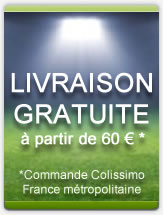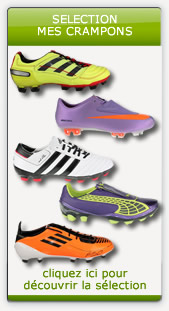Soccer Goal Dimensions: Height, Width, Depth StandardsWhen you're setting up a soccer field, choosing the right goal size isn't just about looks—it's about safety, skill development, and meeting official standards. Different age groups require specific dimensions, and you can't overlook the materials or how deep the net must go. Whether you're coaching youth teams or organizing adult matches, you'll need to know which standards to follow and how to ensure every detail is up to code. But before you buy or build, there’s something you should consider… Regulation Soccer Goal Sizes by Age GroupRegulation soccer goal sizes vary depending on the age group of the players, adapting to their physical development and skill levels. For players aged 6 to 8, the recommended goal dimensions are a maximum height of 4 feet and a width of 6 feet. This size is intended to accommodate younger players who are still developing basic soccer skills. As players advance to ages 9 and 10, the goal dimensions increase to 6 feet 6 inches in height and 18 feet 6 inches in width. This change reflects the players' improved abilities and allows for more complex gameplay, as they become more adept at handling the ball and scoring. For youth players aged 13 and above, the goals conform to full-size standards, measuring 8 feet high and 24 feet wide. These dimensions align with official adult requirements, providing older players with a more competitive environment as they prepare for higher levels of play, which might include club or high school soccer. Governing Bodies and Their Goal RequirementsAs soccer players advance through various age categories, the dimensions and standards for goals are established by authoritative governing bodies that regulate the sport. Notable organizations such as FIFA, US Youth Soccer, and those overseeing high school soccer implement specific guidelines regarding soccer goal sizes. For younger players, US Youth Soccer recommends maximum sizes, prescribing smaller goals for the U6 to U8 age groups. By the time players reach U13, the standardized goal size shifts to the 8 x 24-foot dimensions. These regulations also dictate the diameter of goalposts and nets, aiming to maintain a uniform appearance across competitions. Additionally, safety protocols are in place concerning the securing of goalposts to mitigate risks of tipping. This structured approach ensures that goal standards are consistently applied, thereby fostering an environment conducive to safe and regulated gameplay across different levels. Types of Soccer Goals and MaterialsSoccer goals are available in various types and materials, each suited for different playing environments and age groups. Standard dimensions for professional soccer goals are 8 feet in height and 24 feet in width, typically constructed from durable materials such as steel or aluminum. These materials are chosen for their strength and ability to withstand the rigors of professional play. In contrast, youth soccer goals generally feature smaller dimensions and are often made from lightweight materials such as unplasticized polyvinyl chloride (uPVC). This enables easy relocation and setup for practice or informal games. Portable soccer goals are designed for convenience, often incorporating self-weighted frames or accessories like sandbags and U-pegs to enhance stability during casual matches. These features ensure that the goals remain secure even in dynamic playing conditions. For permanent installations, socketed soccer goals are anchored in concrete sockets, providing a stable and secure option for designated soccer fields. This design is suitable for fields that host regular competitive play. Futsal goals are distinct, with their own unique dimensions and often constructed from brightly colored materials. This design choice serves to improve visibility and safety during indoor play, where space is typically more limited than in traditional outdoor soccer. Soccer Goal Installation and Safety StandardsSelecting the appropriate type of soccer goal is a crucial aspect of ensuring a safe and functional playing field. It's essential to anchor or secure each goal properly, as this directly impacts player safety. Adhering to established safety regulations is important; the diameter of goalposts and the crossbar must measure between 4 and 5 inches. In professional settings, the recommended practice involves embedding socketed goals in concrete for enhanced stability. For portable goals, securing them with sandbags or U-pegs can effectively reduce the risk of tipping. Regular inspections of the goals, including checking their dimensions and materials, are necessary to identify potential hardware issues that could compromise safety. Recommendations for Backyard and Recreational GoalsWhen establishing a backyard or recreational soccer setup, selecting an appropriate goal size is critical and should align with the available space and the ages of the players involved. For older players, a recommended goal size is approximately 6 feet in height by 4 feet in width. This size balances playability with practical considerations regarding space. For younger players, specifically those aged U6 to U8, it's advisable to use smaller goals measuring 4 feet high by 6 feet wide. This ensures that the game remains accessible and appropriately challenging for younger participants. Recreational leagues may benefit from using flexible or adjustable goal sizes to accommodate players as they grow. This adaptability can be advantageous in maintaining consistent engagement across varying age groups. Durability is another important factor when selecting goalposts. It's advisable to opt for materials such as galvanized steel or aluminum, as these materials typically provide the necessary strength to withstand frequent use in recreational settings. This consideration can enhance the longevity of the setup and reduce the need for frequent replacements. ConclusionWhen choosing a soccer goal, always consider the age group and skill level of the players. Sticking to the standard dimensions not only ensures safety but also makes the game more enjoyable and challenging for everyone. Whether you’re coaching, organizing a league, or just setting up a backyard game, following the right guidelines really matters. Take the time to choose the best goal for your needs, and you’ll set everyone up for fun and skill development. |

    
 |
|||||
Produits : Chaussures , Protections , Textiles , Divers
Chaussure Crampon : crampons vissés , crampons moulés , chaussure foot en salle , chaussure terrain stabilisé

 MON COMPTE
MON COMPTE

























